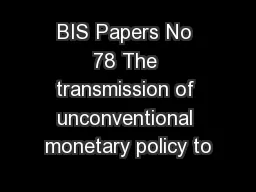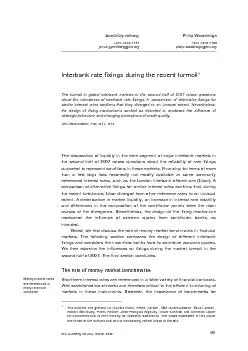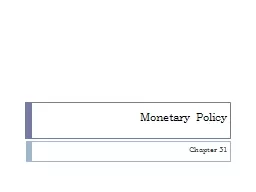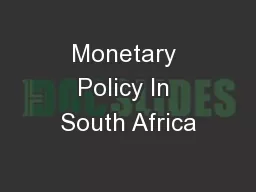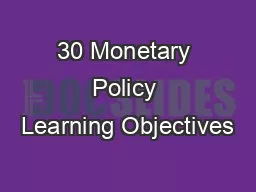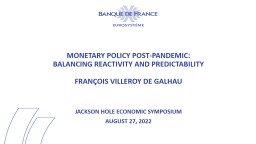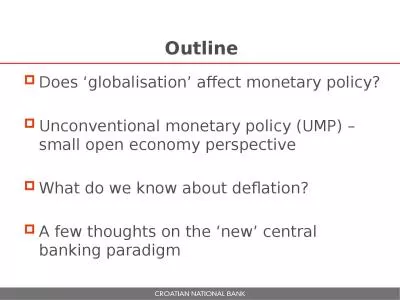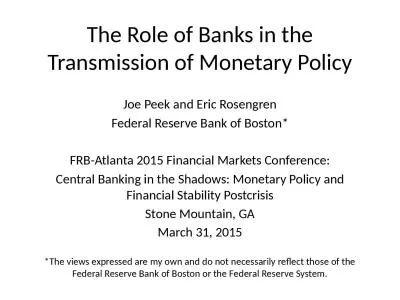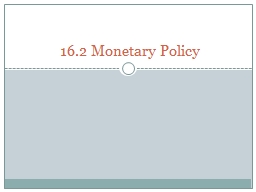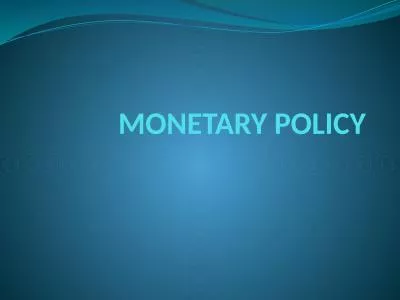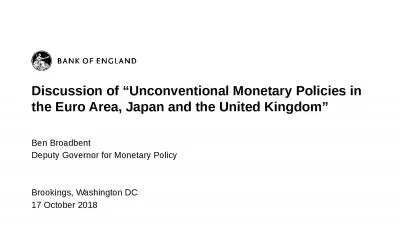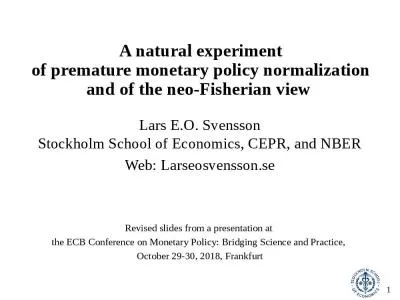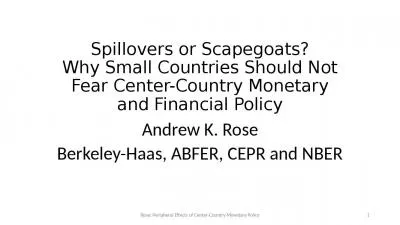PDF-BIS Papers No 78 The transmission of unconventional monetary policy to
Author : celsa-spraggs | Published Date : 2015-11-23
BIS Papers No 78Highly accommodative monetary policies in the major advanced economies and questions about the exit from such policies have created major challenges
Presentation Embed Code
Download Presentation
Download Presentation The PPT/PDF document "BIS Papers No 78 The transmission of unc..." is the property of its rightful owner. Permission is granted to download and print the materials on this website for personal, non-commercial use only, and to display it on your personal computer provided you do not modify the materials and that you retain all copyright notices contained in the materials. By downloading content from our website, you accept the terms of this agreement.
BIS Papers No 78 The transmission of unconventional monetary policy to: Transcript
Download Rules Of Document
"BIS Papers No 78 The transmission of unconventional monetary policy to"The content belongs to its owner. You may download and print it for personal use, without modification, and keep all copyright notices. By downloading, you agree to these terms.
Related Documents

